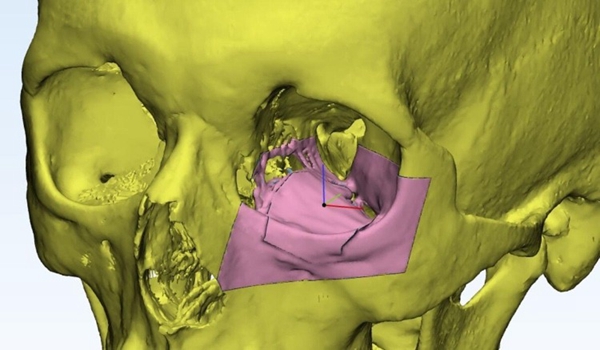A UAE resident from Pakistan regained his eyesight after reconstructing his eye socket with the help of doctors and 3D printing technology.
Nov. 7, 2022 - A UAE resident from Pakistan has regained his vision after reconstructing his eye sockets with the help of doctors and 3D printingtechnology, according to Mohou.com.

△ 3D printing technology reconstructs patient's eye socket implant
In February, the patient, Sultan Abdul Majeed, a restaurateur in Ras Al Khaimah, was punched in the face after a heated argument with a customer. The man was unable to open his left eye after the incident and could not raise his head properly.

Sultan Abdul Majeed, a restaurateur in Ras Al Khaimah
3D printing with eye socket implant
After a CT scan revealed that over 50% of the bone under his eye socket had been fractured, local doctors told him in March that he would need facial reconstruction surgery. The surgery was then performed by a team of maxillofacial surgeons at the Umm Al Quwain Specialized Dental Center, part of the UAE Medical Services, and Dr. Mohamed Farid Abdelwahed was the one who designed the 3D printed model of Majeed's left eye socket. Fortunately, the surgery was successful and the patient recovered almost completely from his diplopia problem.

△ In 2021, researchers mounted a 3D-printed eye socket implant on a skull model
Back in 2021, a team of researchers found that 3D printing technology with special implant materials could not only treat eye socket fractures, but also effectively reduce the risk of post-operative rejection. The team's grafts printed using the Prusa i3 3D printer and PEEK filaments were able to overcome the material's biological inertness thanks to its porous nature, which can be customized to enhance cellular repair. Through finite element (FE) analysis, the team also found that their devices are highly customizable, meaning that in the future, they can be adapted to meet the needs of individual optical patients.

△ Khalifa University of Science and Technology researchers have developed a new method of manufacturing custom glasses using 3D printing that could help color-blind patients
Attitudes toward 3D printing across the Middle East
The technology has gained considerable popularity throughout the Middle East. The technology is now also being used to treat other medical conditions, not just during surgical procedures. Back in August 2022, researchers at Khalifa University in the UAE developed 3D-printed glasses to treat color blindness. The condition is known as color vision deficiency (CVD), which limits the ability of retinal retinal cone cells to transmit multiple colors. The most common treatment is to wear tinted glasses.
Meanwhile, the construction industry has been one of the most prominent sectors in terms of development, as several countries in the region have been launching new record-breaking projects. Oman, for example, wants to develop the world's largest 3D printed concrete structure. Like Oman, Saudi Arabia's Habitas is believed to be the latest hotel chain to use 3D printing technology to build a structure in the city of AIUIa.
For those unfamiliar with the technology, 3D printing is a process that turns a computer model into a 3D three-dimensional object. The object is then created using a 3D printer that reads a digital blueprint and replicates it layer by layer using ultraviolet light. According to Middle Eastern architects claim that traditional manufacturing usually requires consideration of expensive machinery costs, while 3D printing equipment is much less costly. Most importantly, is that it greatly speeds up the production of goods without the need for high labor costs.







